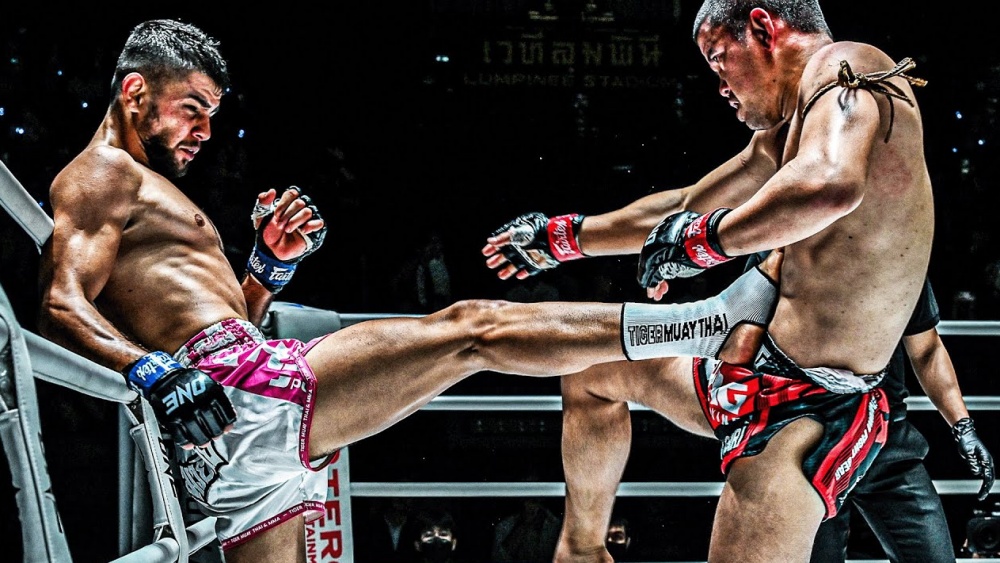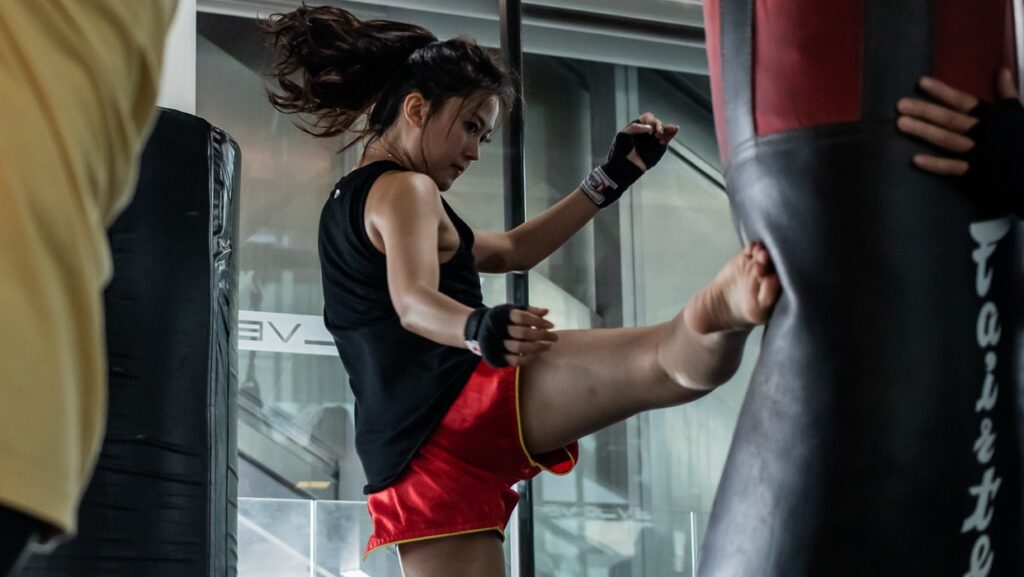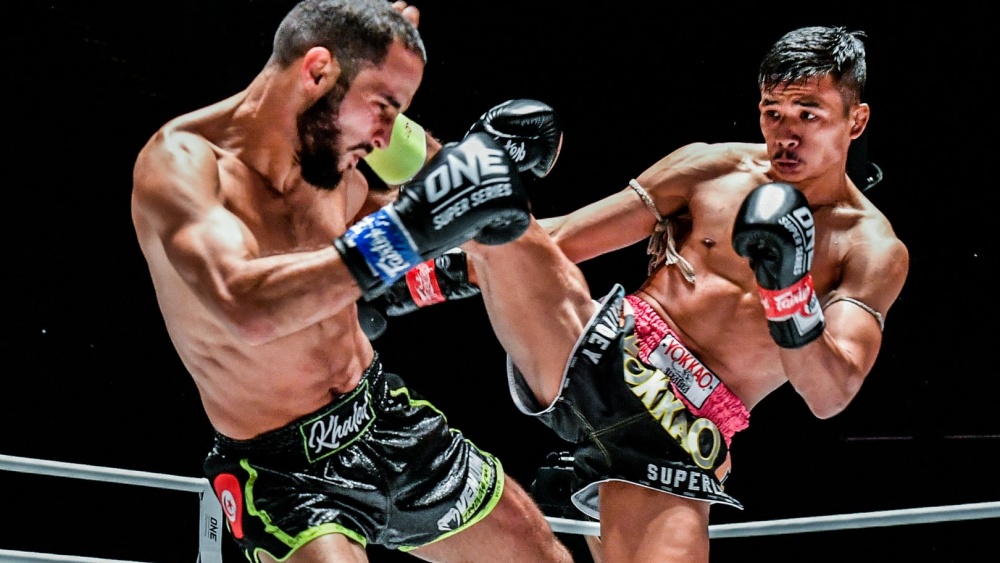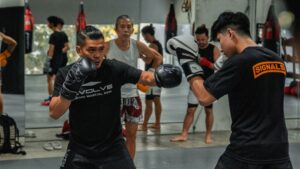Muay Thai fighters are elite athletes. They train diligently to get their lean, muscular bodies and clear-cut abs and anyone who has seen them in the ring can attest to their peak physical condition. They have the kind of body you see on the cover of health and fitness magazines. Thousands of people around the world diet and train themselves to exhaustion trying and failing to achieve this look and if you’re one of them, you must be wondering what method these fighters use to make themselves look like they’ve been sculpted from marble. Luckily, this method isn’t a closely guarded secret. It’s simply a commitment to a diet and training regime that stays fairly consistent in Muay Thai gyms around the globe.
If you want to achieve this mythical figure, then read on. In this article, we’ll map out the plan that these athletes follow to get their bodies in fighting shape. Don’t worry if you don’t have a Muay Thai gym or if you are carrying a few injuries that are keeping you from kicking pads, we’ll also give you examples of different exercises that work just as well as the real thing.
1) Running
Running is the cornerstone of the Muay Thai training routine. Many fighters spend more time running in a fight camp than they do kicking pads! In Thailand, the motherland of Muay Thai, it’s common for fighters to run up to 12km or twice a day to condition their legs and build their fitness. It is also a great way to burn fat and tone up.
Not everybody can run for an hour or more each day. Some of us have knee and ankle issues that make the repetitive impact painful, some of us don’t live in an area with safe places to run, and some of us just find it plain boring!
Luckily there are alternatives, many western fighters swap running for other forms of steady-state cardio such as swimming and cycling but you can also use cardio machines at your local gym such as stationary bikes, elliptical trainers, Ski Ergs, and rowers.
It doesn’t matter which method you choose as long as you remain consistent. You’ll need to do this at least several times a week, working at a moderate pace that you can maintain for thirty minutes or more without stopping to catch your breath. Fighters don’t empty their gas tanks running because they have a whole lot more work to do once they’re finished and if you want the body of a fighter, you’ve got to save some energy for all the work that follows.
2) Pad Work
Pad work for Muay Thai is a full-body workout that fighters use to sharpen their weapons and build technique. Pad rounds can go anywhere from two to five minutes (often longer in Thai gyms) and hitting them as hard and as fast as possible builds strength, sculpting firm muscle fibers with each strike.
Some people avoid hitting pads because they carry injuries that make punching or kicking painful. Also, holding pads can be surprisingly difficult, especially if you haven’t been trained to do it, and not everyone is lucky enough to have a membership at a Muay Thai gym or have a dedicated training partner to hold for them.
If you are one of those that don’t particularly enjoy pad work don’t stress, you can swap your pad work for a daily HIIT session!
HIIT stands for High-Intensity Interval Training, a mode of exercise characterized by short periods of fast, explosive exercise broken up with short periods of rest. The stop-start nature of these workouts coupled with the variation of muscle groups used make it a great substitute for pad work. It is a popular style of training in fitness gyms and as sessions are quite versatile, it is possible to create your own HIIT workouts at a local park and even at home. You can get creative with these workouts making them a fun way to lose fat and tone up without getting bored of the same old routine. Best of all, you can get a solid HIIT session completed in less than 20 minutes!
Common workout structures could include 10,15 or 20 rounds broken into work/rest intervals of 30/30 seconds, 20/40 seconds, or 60/60 seconds. Each work interval is done with the highest effort possible.
You can use plyometric, bodyweight movements such as push-ups, sit-ups, squats, burpees, and mountain climbers.
You can also incorporate light/moderate weights such as dumbbells, kettlebells, or medicine balls
In Muay Thai tall, lean fighters have an advantage over shorter, musclebound opponents so their strength and conditioning programs are often limited to exercises that make them as strong as possible without them stacking on weight. Not all fighters lift weights, but if they do, they’ll favour low reps (6 or less) at high weight (over 80% of their max) as a way of increasing their strength-to-weight ratio without increasing their mass.
Fighters will focus on exercises that are specific to Muay Thai such as pull-ups to develop clinch strength, squats, and deadlifts for their kicking power, and of course abs, abs and more abs to help them generate power and protect themselves from savage body shots.
If you decide to make weightlifting a part of your routine, then we’d suggest no more than two or three sessions a week. If you want to build that coveted fighter’s physique, then we can’t emphasize the importance of ab work enough, so try to incorporate some of the following core exercises at the end of every training session:
- Sit-Ups (both body weight and weighted)
- Body And Side Planks
- Bicycle Crunches
- Russian Twists
- Leg Raises
- V-Sits
The options are nearly endless!
Every one of us has a unique metabolism that is influenced by our diet, genetics, lifestyle, and routine. Therefore, there isn’t a diet that is perfect for building a fighter’s body. Many of the fighters you see work with trained dieticians who tweak their diet, prescribe supplements, and measure their energy levels, often on a weekly basis. It can be counter-productive (and even dangerous) to prescribe a ‘one size fits all’ approach to dieting so we will only go as far as to suggest that if you are eating clean, healthy foods and training consistently but still not seeing the changes you would like, then consider seeking out the advice of a qualified professional.
Some Final Advice
If you are constantly comparing your body to Muay Thai fighters and find yourself coming up short, it is important to remember that they are professional athletes. They don’t always have the same work and family commitments that the rest of us contend with each day and the way they look on fight day isn’t always how they look in the gym.
To make weight for a fight, professional fighters (with the support of trained professionals) will heavily restrict their calories for weeks on end. It’s a taxing process and any experienced fighter will tell you that it is not a pleasant one. Also, a fighter is usually incredibly dehydrated when they step onto the scales, which can make them look leaner than they actually are.
This does not mean that achieving their desired physique is going to be impossible. It just means it will take more time. If you stay consistent with your diet and training, and most importantly, enjoy the process, then you will eventually get the perfectly shaped body you are working for!
You may also like:

















